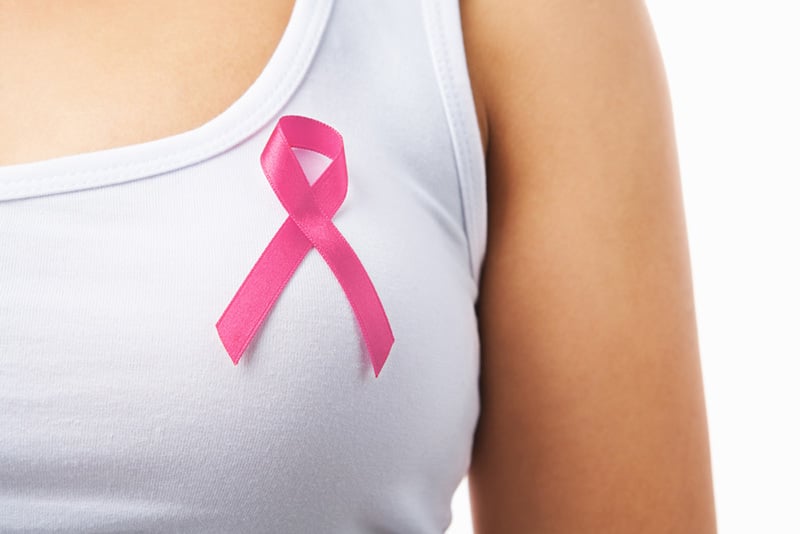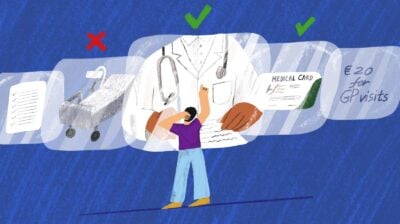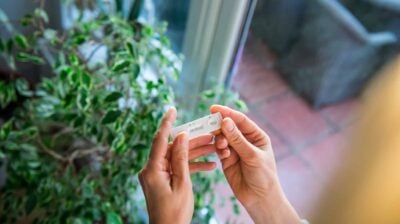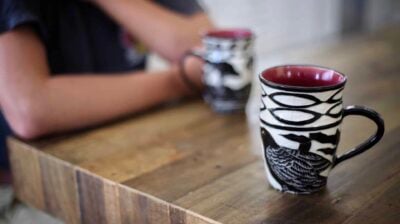How to check your breasts for lumps
It’s important to feel around regularly, and go to a doctor if you find something

Breast awareness means knowing what is normal for you so that you realise if there is any unusual change to your breasts. Irish women have a 1 in 13 chance of developing breast cancer in their lifetime, making breast awareness a really important issue for all of us.
There are a number of reasons why you might find a change in your breasts, and most breast changes are not cancer related, but you should go to a doctor just to make sure.
Get to know your breasts
- You should regularly (maybe every time you shower), look at your breasts and feel them. This will make you more aware of their natural shape, size and feel.
- Also take the time to check them carefully once a month. A good time to do this is about one week after your period.
- Your breasts might often change before and during your period. At this time they can become bigger, tender or lumpy.
- Some people might have tender or lumpy breasts at different times of the month. If any of the changes worry you, then see a doctor right away.
- Some women naturally have one breast that's bigger than the other. This is normal and not something to worry about.
How to detect changes
When checking for changes, you should see if anything looks or feels different
Feeling for changes
- Feel your breasts in the shower, bath or while lying down
- Feel one breast at a time with your fingers together and flat against the breast
- Press firmly all over the breast, nipple and armpit
- Check for any lumps, hard knots or thickening
- Start with the skin furthest from your nipple and move in a circular motion. When you've finished the circle, move your hand in a little and do the same again. Continue until you've checked right in to the nipple and on the nipple as well.
- Squeeze your nipple to check that there's no discharge (liquid).
- Go through the same steps with your other breast.
Looking for changes
- Stand in front of a mirror and look at your breasts from different angles, with your arms at your sides
- Move from side to side so that you can see every part of your breasts
- Check them again with your arms stretched above your head and with your hands on your head
- Take a final look from different angles with your hands on hips, elbows forward and chest muscles tensed
Be aware of any of the following changes:
- A lump of any size or a thickening in your breast.
- Lumps, swelling or constant pain in your armpit or around your collarbone.
- Constant pain in part of your breast or armpit area.
- A change in breast size or shape, such as one breast becoming larger.
- Nipple changes in the shape or where the nipple usually sits. Also, look for any unusual discharge (liquid) from the nipple, especially if there is blood in the liquid.
- Changes on or around the nipple such as rashes, crusted or flaky skin.
- Skin changes such as dimpling, puckering or redness.
- Very enlarged pores giving an orange peel appearance to the skin.
- Veins that become very obvious or stick-out.
What to do if you find something unusual
If you notice a change in your breasts, visit a doctor as soon as possible. Even though 9 out of 10 breast lumps are harmless, you need to have every lump checked. It saves a lot of worrying.
What will happen when I visit the doctor?
- When you visit the doctor, they will ask you to take off your top and bra for the breast examination
- If you're worried or embarrassed about this, then ask for a female doctor
- The doctor will be able to tell you if there's nothing to worry about, but if needed, you might be asked to return for a more detailed examination
What can I do to protect myself against breast cancer?
-
Try to keep at a healthy weight
- Be active and try to get enough exercise
- Limit your alcohol intake
- If you have had a baby, breastfeeding can help
- Avoid smoking, as it can lead to a number of health problems, including breast cancer
When you're getting your breasts examined why not ask for a smear test as well? And if you are sexually active, you can ask to be checked for sexually transmitted infections at the same time.






